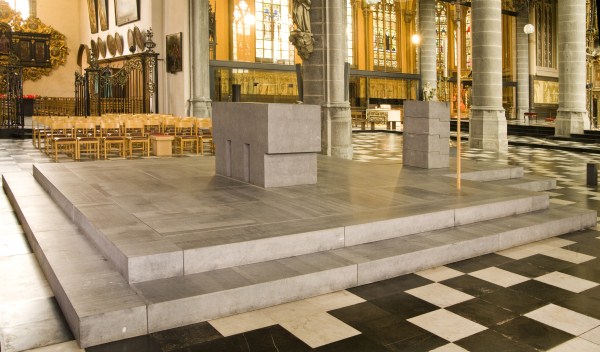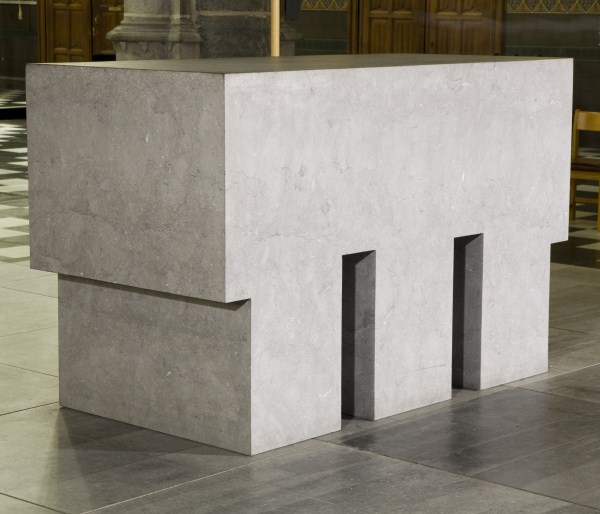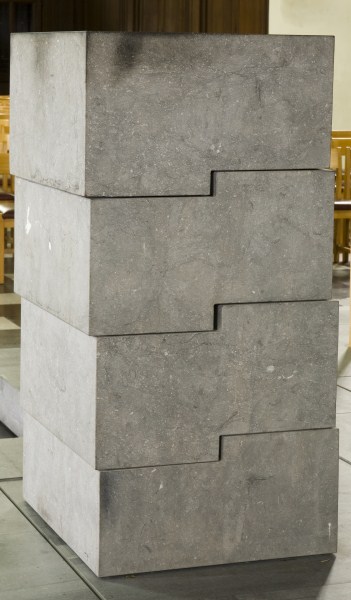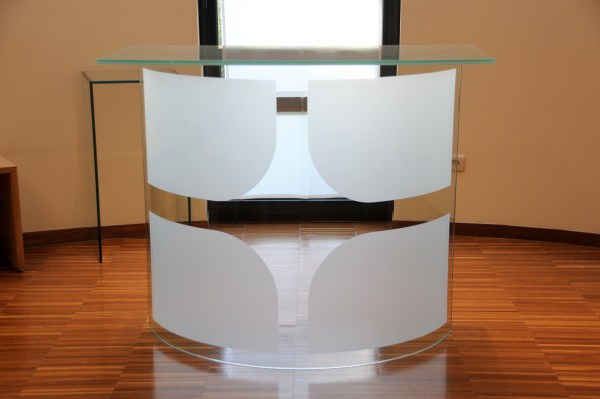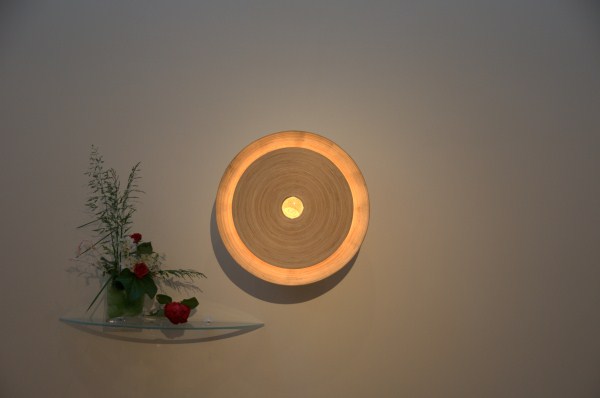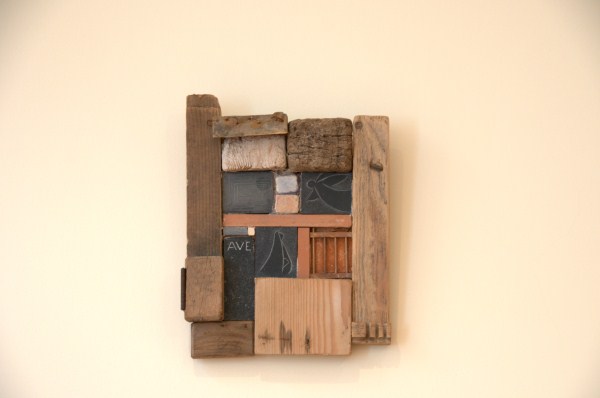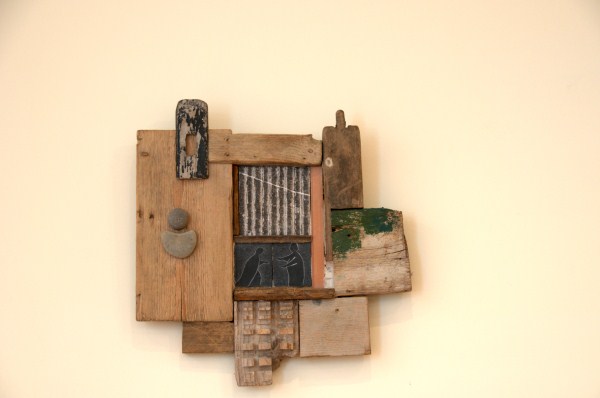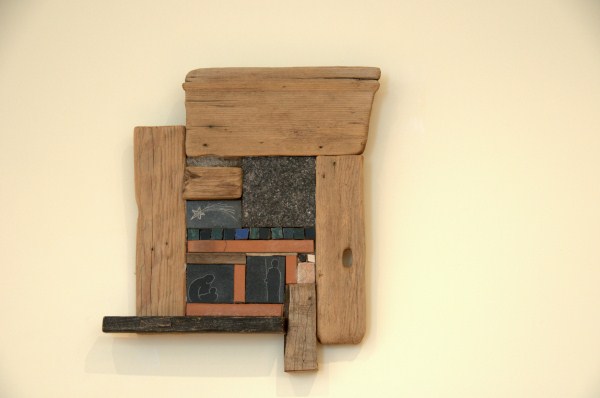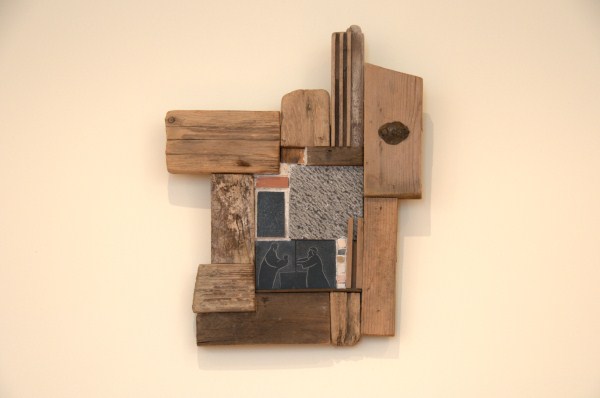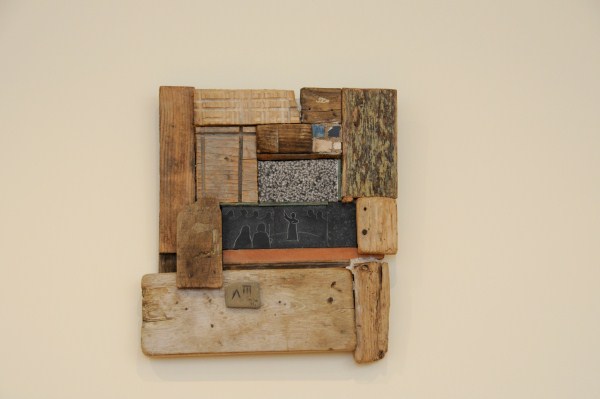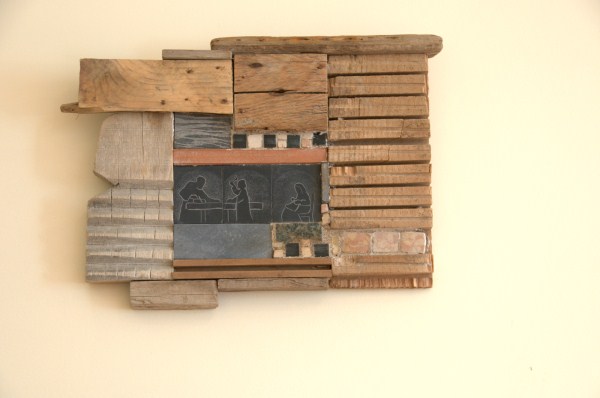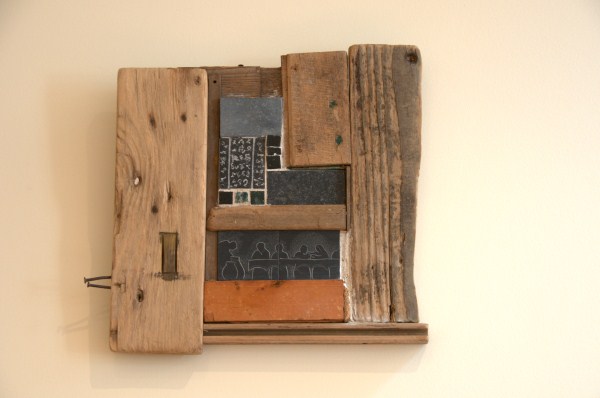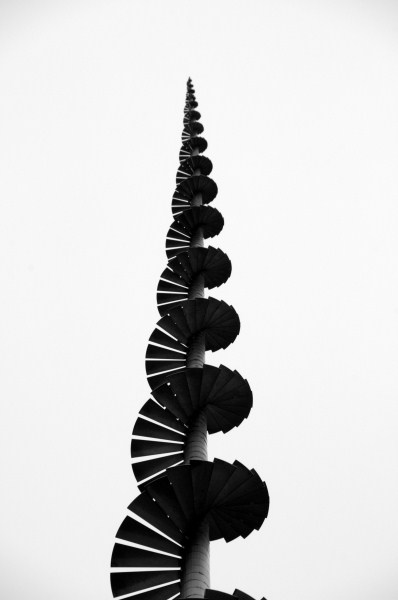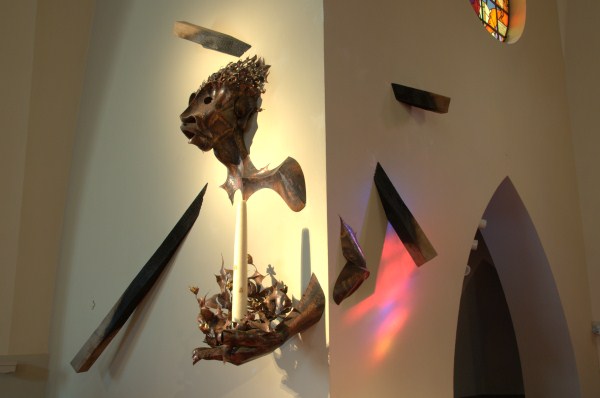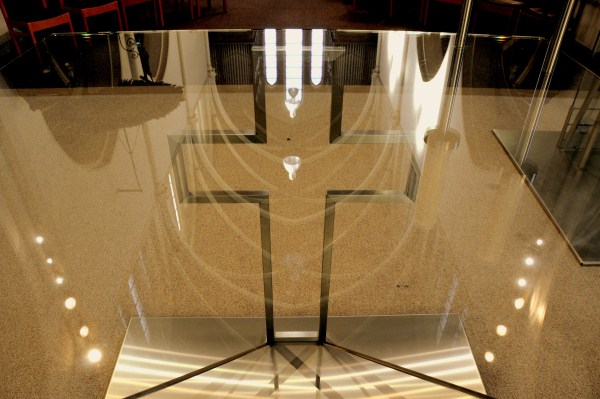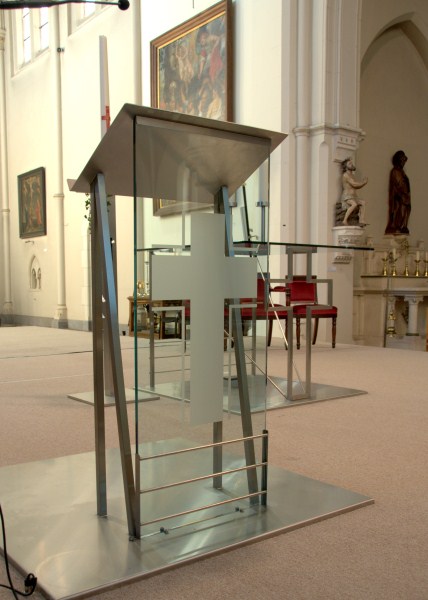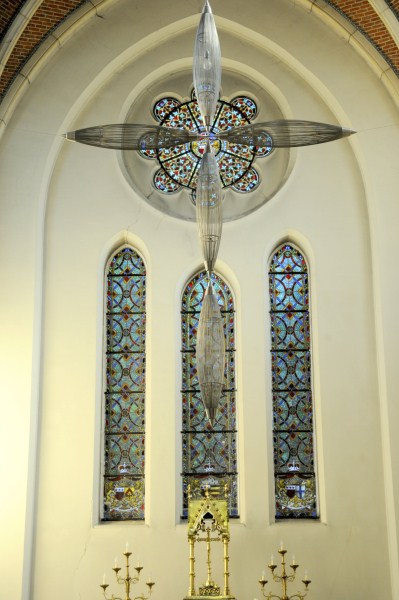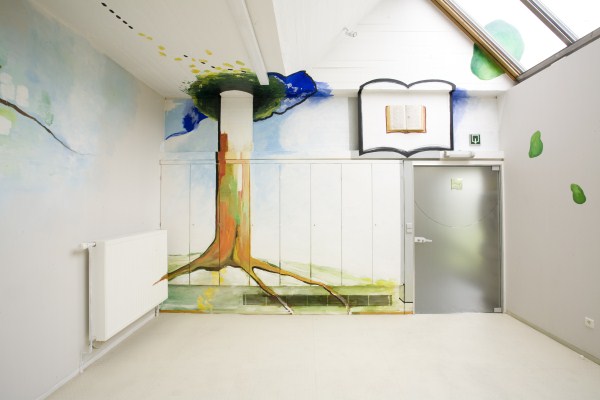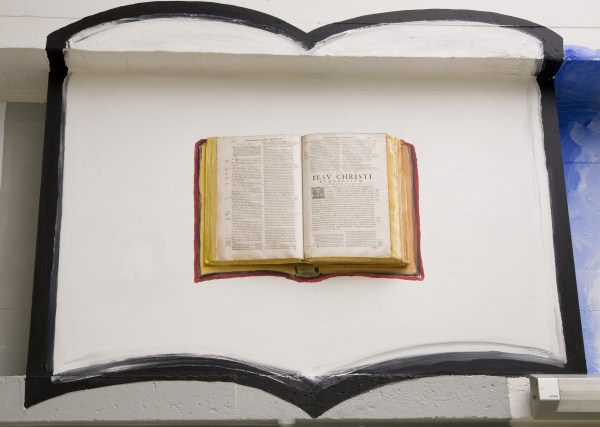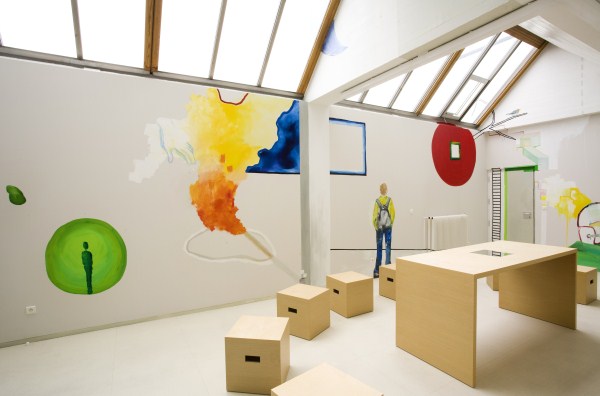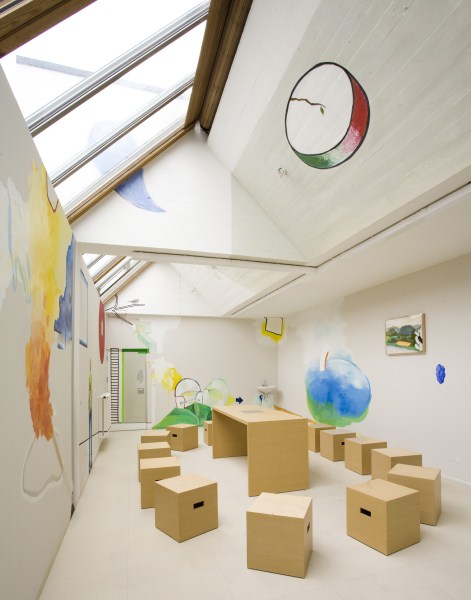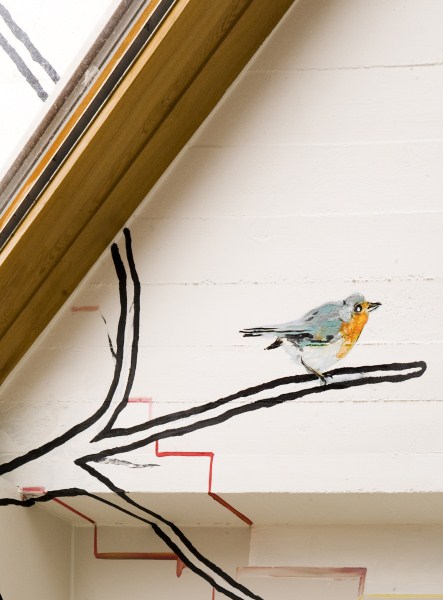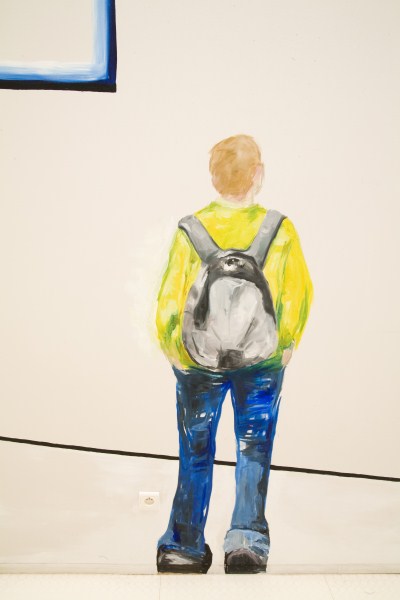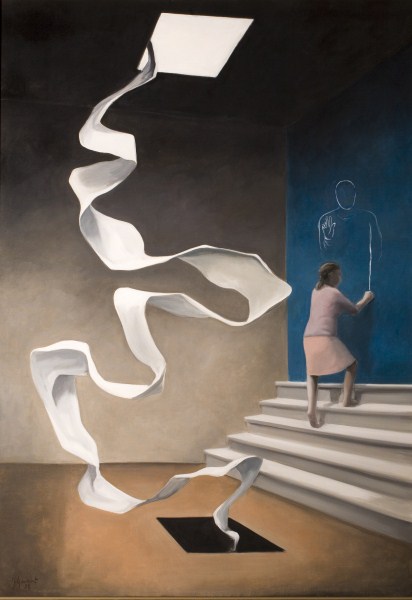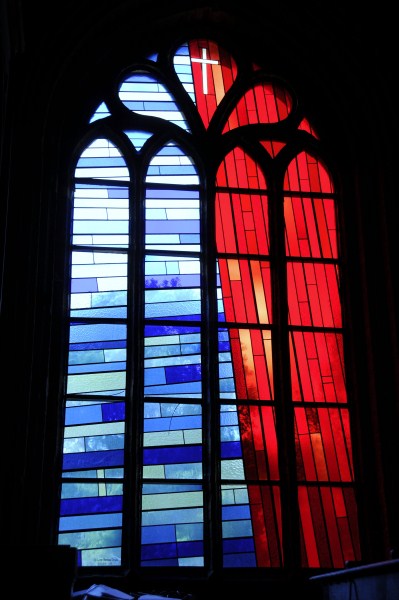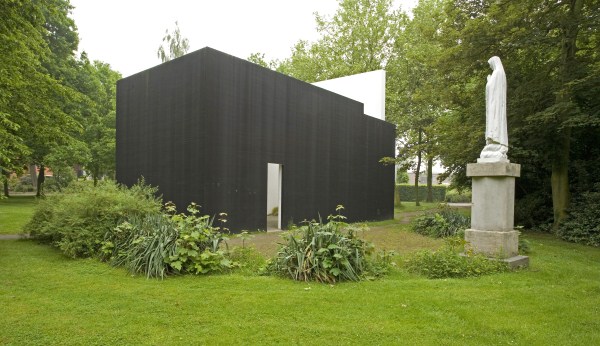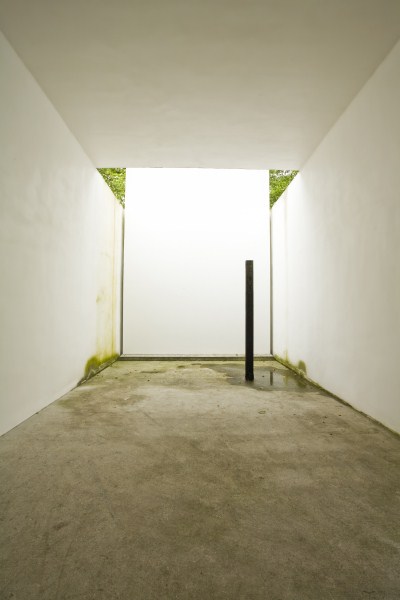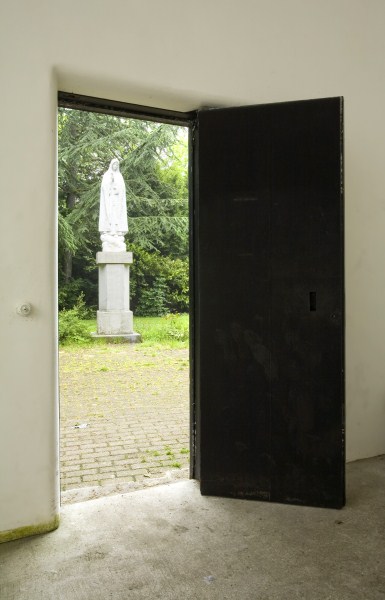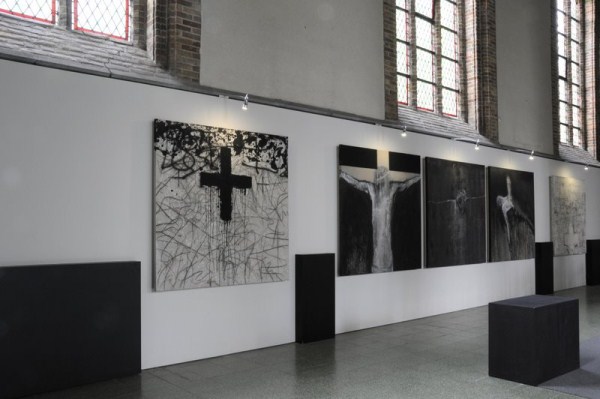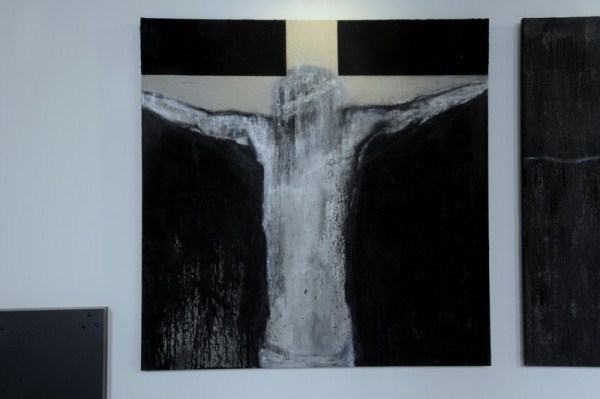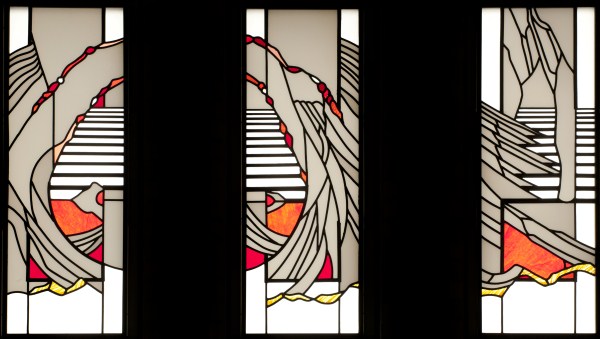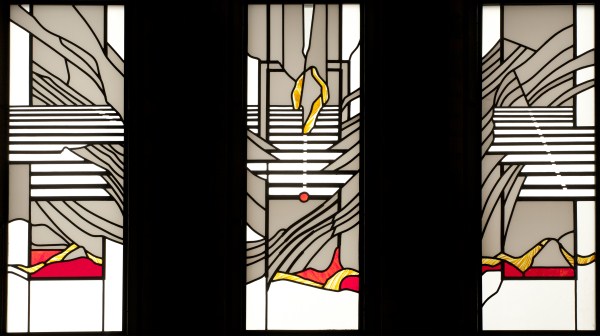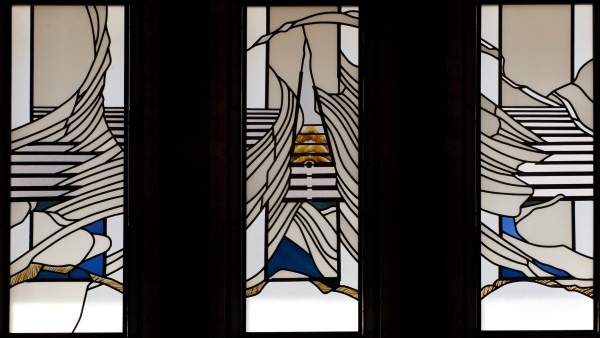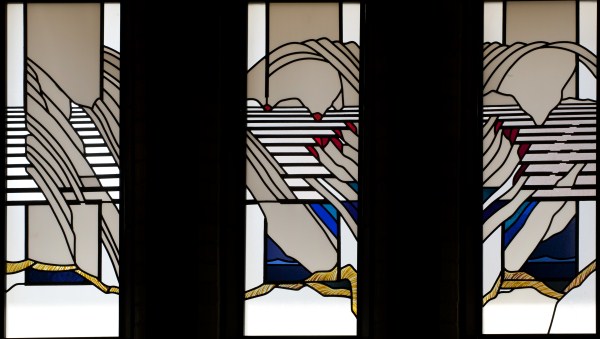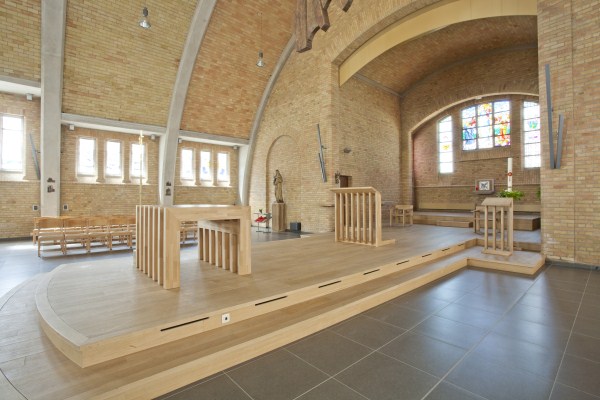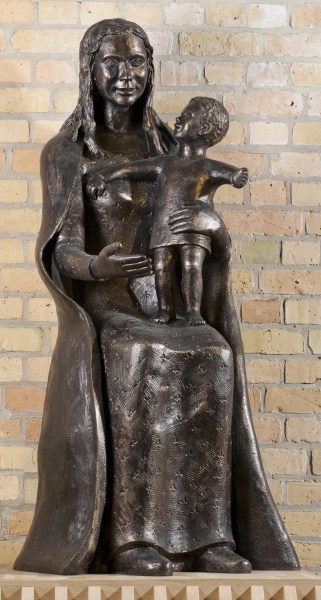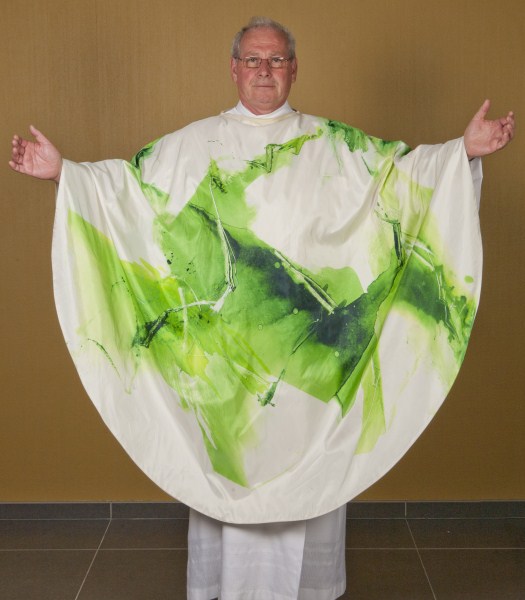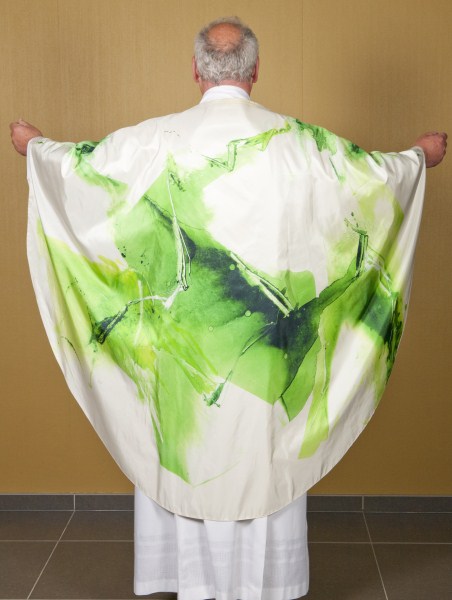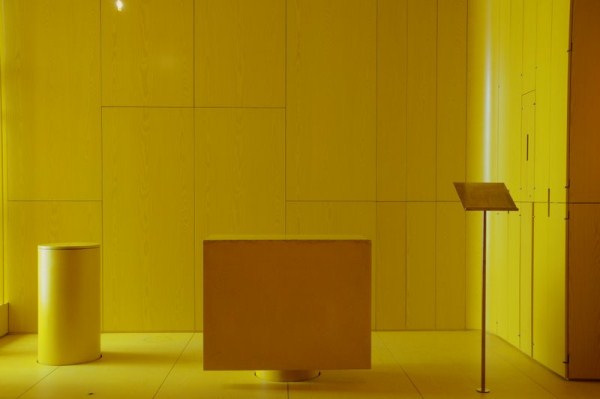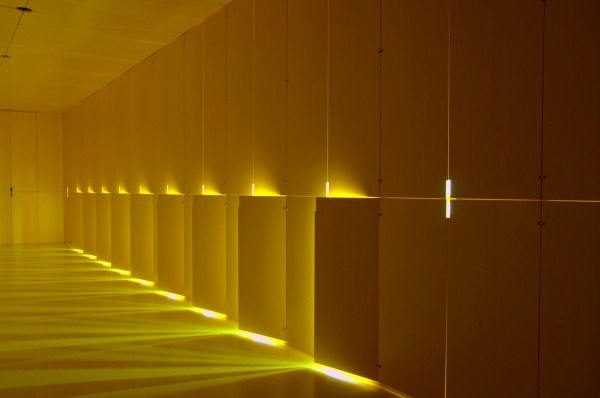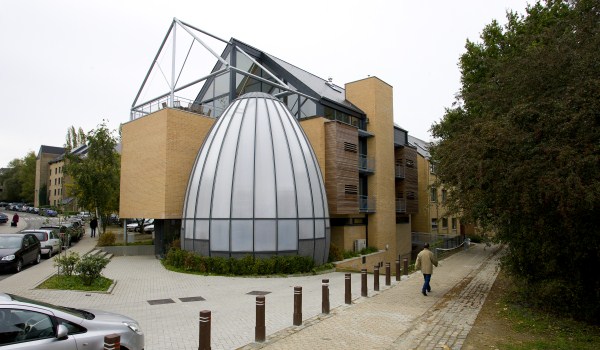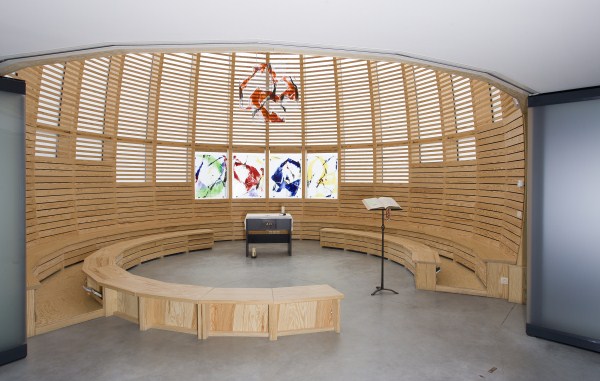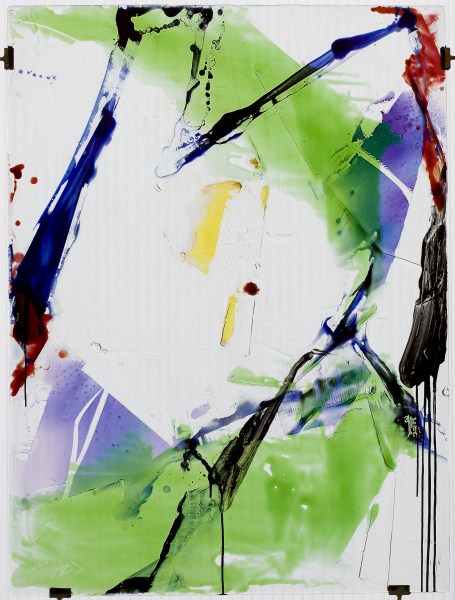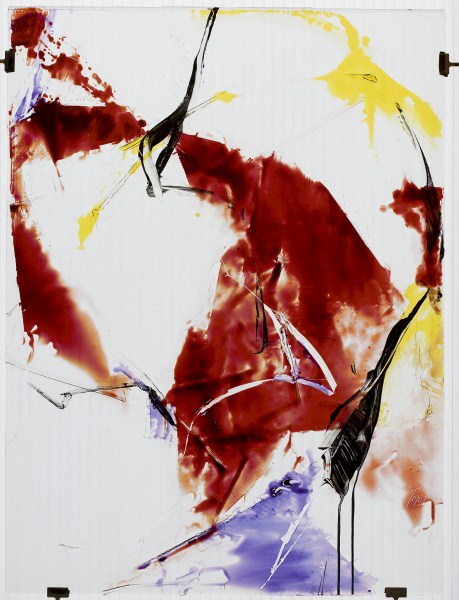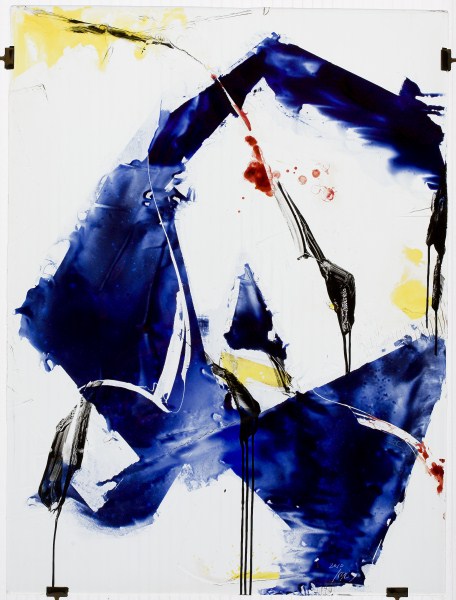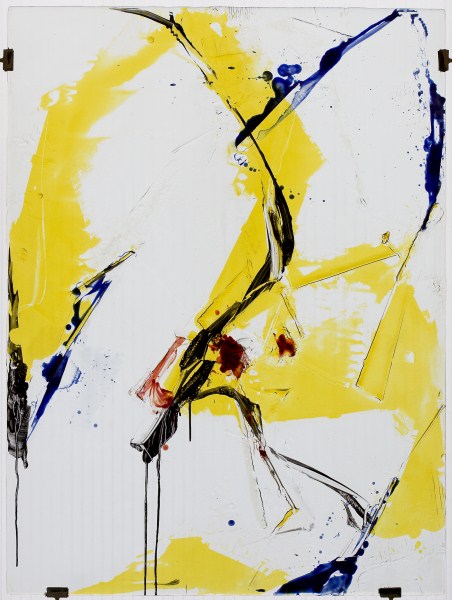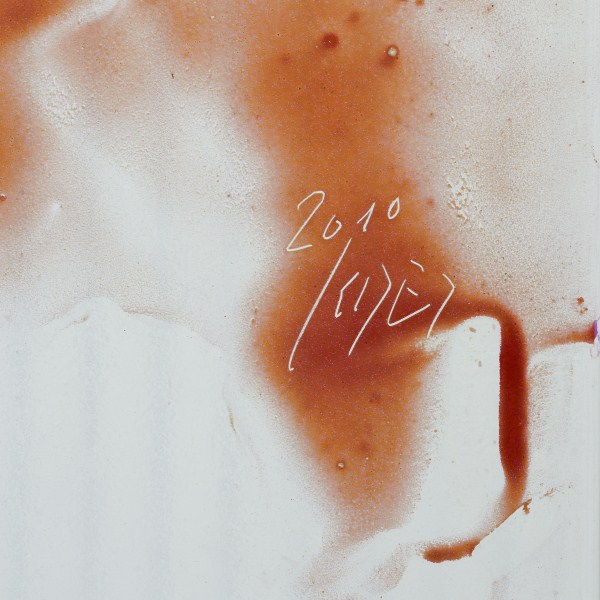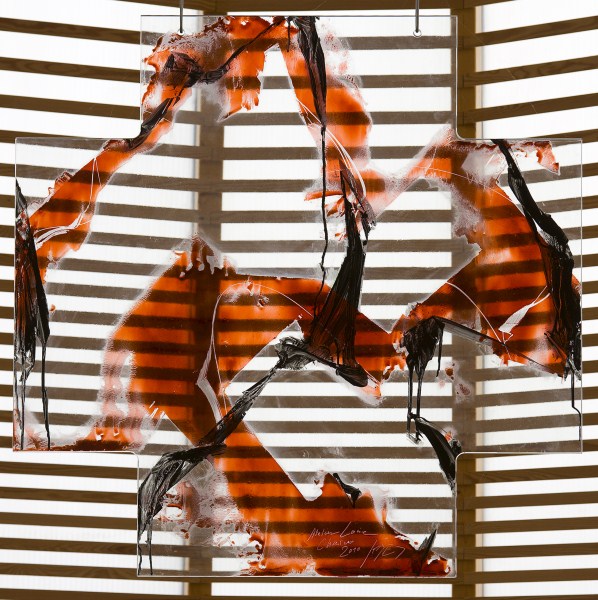New spring for religious art The advancement of contemporary art into Belgian liturgical spaces (2000-2010)
Inspiring examples
Over the past decade many thousands of art objects have been brought into churches and chapels. But there is a lot of deadwood. This book provides an overview of roughly one hundred of the ‘better’ artistic realisations. But these examples enjoyed only a local influence, which is characteristic of that kind of art. We collected many hundreds of ‘puzzle-pieces’ during our visits and contacts over many years, reviewing the existing literature and scanning the internet and newspapers. All of these pieces were brought together into a consistent whole. Attention was given in the first place to the Catholic church, which has the greatest number of houses of worship. We also provide a look at the liturgical spaces of other Christian denominations. We annually select for this website the most inspiring examples.
Year 2000
° SMOLDERS Michel (Belgium) Altar Saint Gudula and Saint Michael cathedral – Brussels
|
© KIK-IRPA |
° Father MAUR (Belgium) Altar abby church – Zevenkerken (Bruges)
|
© KIK-IRPA |
° ALQUIN Nicolas (France) Saint Peters church – Huy
|
© KIK-IRPA |
° LONDOT Louis-Marie (Belgium) Saint Martin church – Beauraing
|
© KIK-IRPA |
Year 2001
° ZOGMAYER Leo (Austria) Church of the German speaking community – Saint Pieters Woluwe (Brussels)
Architect: Catherine De Bie (Belgium)
Advisers: Gottfried Stracke (Germany) and Mark Delrue (Belgium)
|
© KIK-IRPA |
|
© KIK-IRPA |
° CAEN Joost (Belgium) Holy Heart church – Kortrijk
Participating artists: H. Peters (Germany), Hans Wurmer (Germany) and sisters Hadewych and Myriam (Belgium)
Architect: Joachim Kurstjens (Belgium)
Interior architect: Dirk Derieuw (Belgium)
Liturgical advisers: Leo Missine and Mark Delrue (Belgium)
|
© KIK-IRPA |
|
© KIK-IRPA |
|
© KIK-IRPA |
° GORIS, Jan (Belgium)
Stained-glass windows Saint Aleydis church – Saint Peters Woluwe (Brussels)
|
|
Year 2002
°Project YOT Magdalena church – Bruges
|
|
° DIEUDONNÉ Jacques (France)
Chapel former abbey – Drongen (Ghent)
Participating artist: Luc Hoenraet (Belgium)
Advisers: Jos Alaerts, Jan Koenot, Mark Delrue, Frédéric Debuyst and Dirk Boone (Belgium)
|
© KIK-IRPA |
|
© KIK-IRPA |
° MARCASE (Belgium)
‘Haltes’, Saint Peters church – Olsene (Zulte)
Zulte
Participating poet: Paul Demets (Belgium)
|
© KIK-IRPA |
Year 2003
° VANDEBEEK Roel (Belgium) Saint Martin church – Stevoort (Hasselt)
Architect: Herman van Meer (Belgium)Light artists: Weyers & Borms (Belgium)
|
|
° COSSE Jean & Florence (Belgium) Saint Martin church – Dion-le-Val
Participating artist: Alic Grimonprez (Belgium)
Staines-glass windows : Jean-Marie Géron (Belgium)
|
© KIK-IRPA |
° TRIBOLET, Etienne (Belgium) Stained-glass windows, Holy Trinity church – Brussels
|
|
Year 2004
° GIES Wilhelm (Germany) Saint Martin church – Kortrijk
Advisers: Gottfried Stracke (Germany) and Mark Delrue (Belgium)
|
© KIK-IRPA |
Year 2005
°CIRO – Roberto Cipollone (Italy) Chapel Foculare movement – Wezemaal
Architects: Francis Keutgens (Belgium) and Marcelo Pardo (Agentina)
|
|
|
|
° CLAERHOUT Matthias (Belgium) ‘Jacobs ladder’ – diocese of Bruges
|
|
Year 2006
° BOGAERT Bart (Belgium) ‘In Spiritum vivificantem’, Saint Amandus church – Zwevegem
|
|
° VANDERHEYDEN Dirk (Belgium) Saint Stefanus church – Hingene
|
|
° RAVEEL Roger (Belgium) Meditative space KULAK university – Kortrijk
|
© KIK-IRPA |
|
© KIK-IRPA |
Year 2007
° GEVAERT Joost (Belgium) ‘He’s not here’, church – Assebroek-Brugge
|
© KIK-IRPA |
Year 2008
° SERCU Bernard (Belgium) Mission stained-glass window, church – Elverdinge
|
|
° DE CORDIER Thierry (Belgium) ‘Chapel of Nothingness’ – Duffel
|
© KIK-IRPA |
Year 2009
° HOENRAET Luc (Belgium) ‘Stations of the cross’, church – Langemark
|
|
° KNAEPEN JOS (Belgium) Saint Idesbaldus church – Sint-Idesbald (Koksijde)
Participating artists: Kim En Young (South-Korea) and Fernand Vanderplancke (Belgium)
Architect: Marc Vandendries (Belgium)
|
© KIK-IRPA |
|
© KIK-IRPA |
|
© KIK-IRPA |
Year 2010
° VENLET Richard (Australia) Chapel and Quiet room – AZ Groeninge, Kortrijk
|
© KIK-IRPA |
° KIM EN JOONG (South Korea) Dominican cloister – Louvain-La-Neuve
Architects: Benoît Gillon and Géry Despret – Agda (Belgium)
|
© KIK-IRPA |
|
© KIK-IRPA |
|
© KIK-IRPA |
Foundation expertise centre Church and Art
The church needs a Belgian or Flemish ‘expertise centre church and art’ that is working under he authority of the episcopal conference. That centre has to conduct in a professional way reform projects in the churches. This expertise network will put into action the following headlines:
1° Cluster all forces
The present available knowhow on the field – Mark Delrue, Frédéric Debuyst and other people with practical experience, just like the team Yotb – must be integrated in the expertise centre.
2° Multidisciplinary network
The church needs a network of artists, architects, interior designers, liturgical advisers, lighting experts, designers … in all stiles, directions and genres who can be evolved to carry out of all kind of projects.
3° Integrate diocese commissions for ecclesiastical patrimony
Every diocese has today a commission for ecclesiastical patrimony to advise liturgical reform projects. These activities ought to be integrated in the new coordinating expertise centre. The diocese commissions has to play partly a new role (see point 4).
4° Appoint an intendant
At the head of the expertise centre comes an intendant who coordinates and follow ups the activities in Belgium or Flanders, assisted by experts in the different disciplines. Not every collaborator ought to be a professional. The church can exempt priests and bring in freelances and volunteers. The succession of the practice of the projects can take place by the commission for ecclesiastical patrimony in every diocese. The intendant is recruited on the base of his competences.
5° Embedding in the CRKC
The experise centre needs no new structure, but can be embedded in the Centre for Art and Culture (CRKC) in the Part abbey in Heverlee. One of the main goals of that centre is the promotion of contemporary art.
The advantage if this embedding is that the superstructure and the basic infrastructure are already there. The financing of the daily work of the centre can be done by: an annual donation from the Episcopal conference, a contribution by the dioceses and the CRKC and a contribution by the costumers.
6° Formation
A crucial aspect in the work of the expertise centre is the periodical organisation of information en formation sessions for the parishes and the responsible people who have plans to reform liturgical spaces. The attention has to go to different aspects, among the security and the protection of the churches – because it is the intention to open all the churches for the public.
7° Publications
It is a matter of concern that the expertise network distributes publications about the new trends with a presentation of the successful projects: printed and by the internet.
8° Point of address for the authorities
The expertise network is the point of address for the authorities and work hard for the protection of the most valuable realisations, so they can not disappear: the Saint Paulus church in Sint-Pieters-Woluwe, the chapel of the Sacred Hart in Kortrijk, the cloister of the Dominicans in Louvain-la-Neuve, the Saint Martin church in Stevoort, the Saint-Martin church in Dion-le-Val, the Saint Martin church in Kortrijk, the Saint Apollonia church in Elst, the Saint Hadian church in Handzame and the Chapel of nothingness in Duffel. Today, the chapel of the student home Pius X in the Arenberg park in Heverlee, the earliest and one of the most beautiful examples of modernistic religious architecture in the post war era created in 1954-55 by Paul Felix and Georges Pepermans, is degenerated to an ordinary depot for lavabo’s and mattresses.
The expertise centre can get going a new dynamic in which the integration of art and a professional contemporary design of liturgical spaces can realise the ultimate goal: the creation of authentic ‘refuges’ in the hart of every community. Young and old people, believers and non believers, people who are hurried or who have time … can come in these places to a stop or find rest, deepening and sense. This can be a unique contribution of the church in the coming about of an better society.
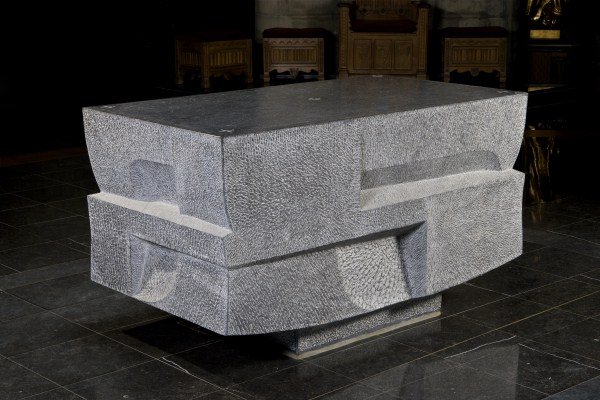
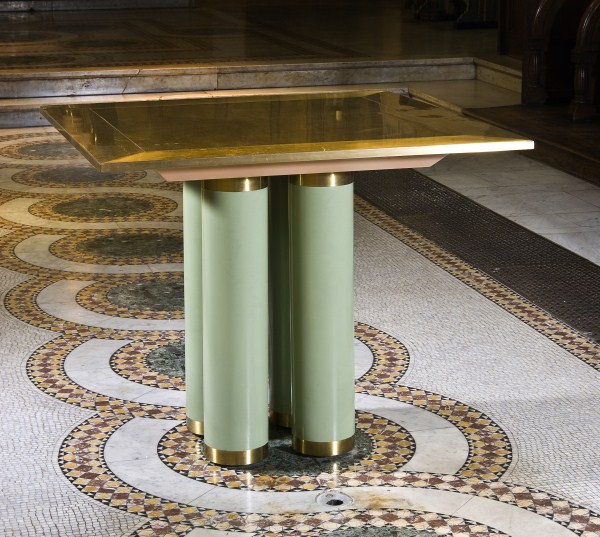
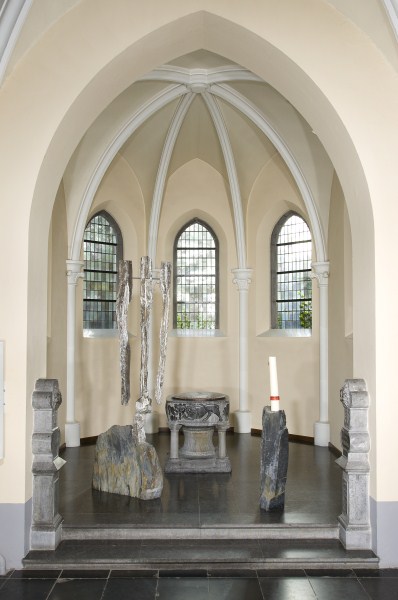
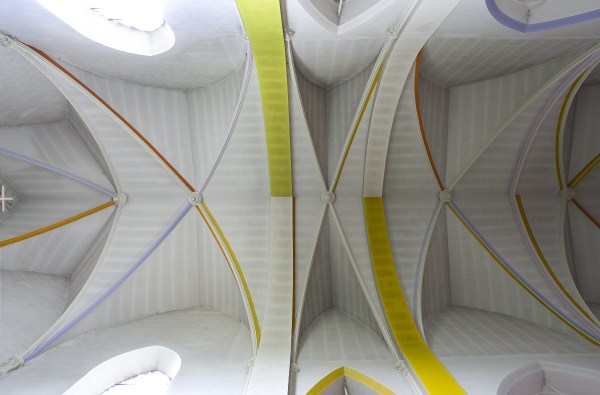
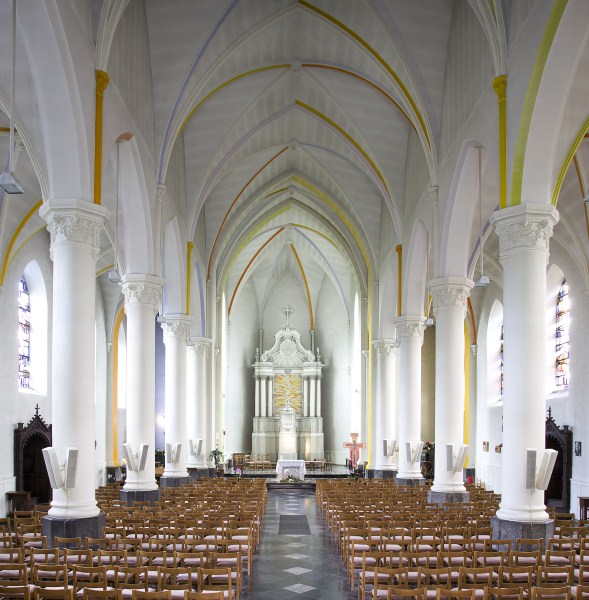
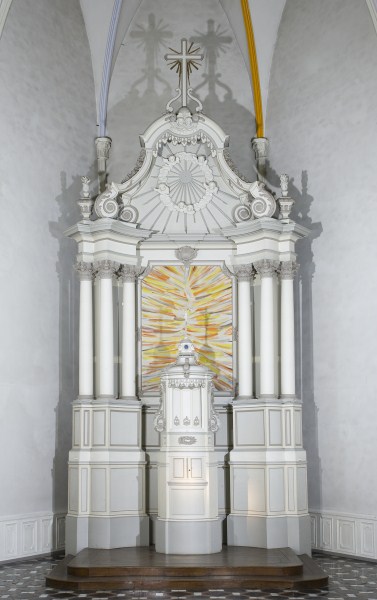
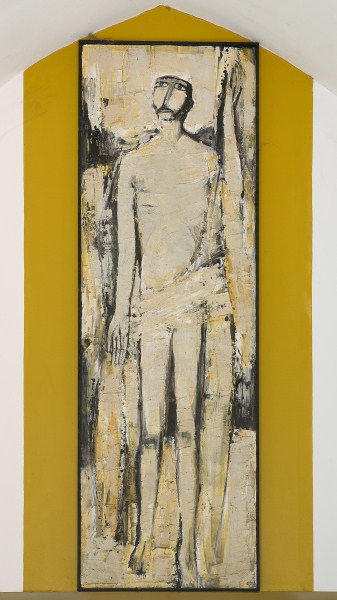
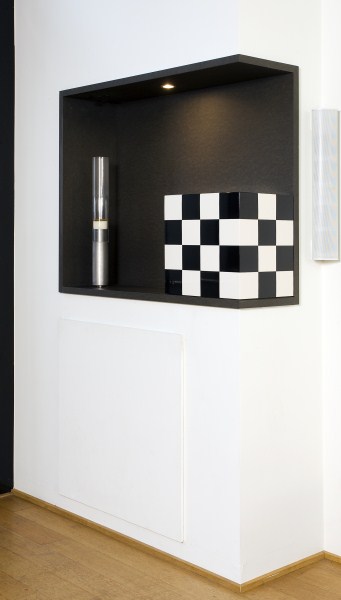
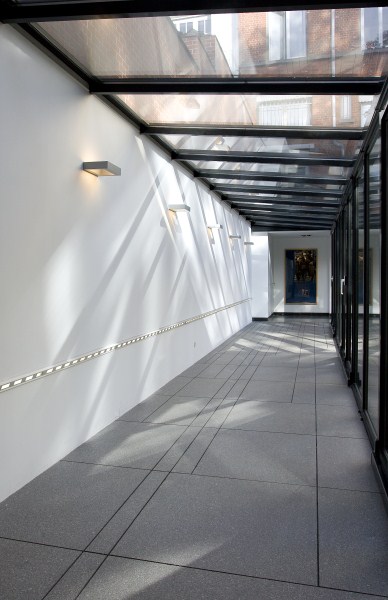
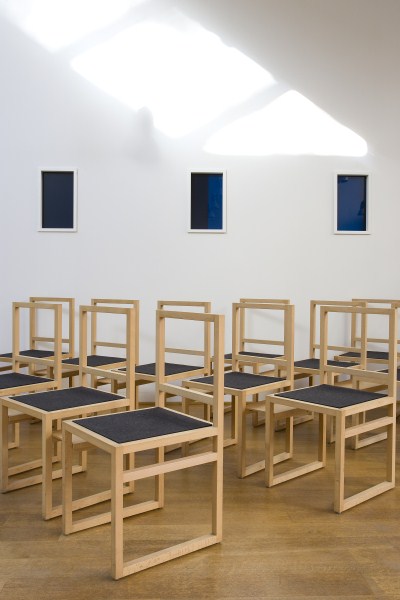
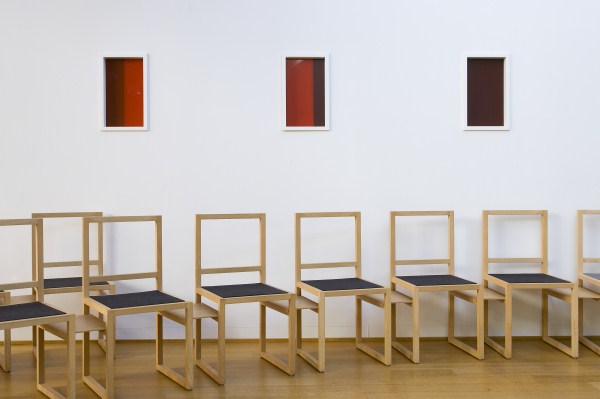
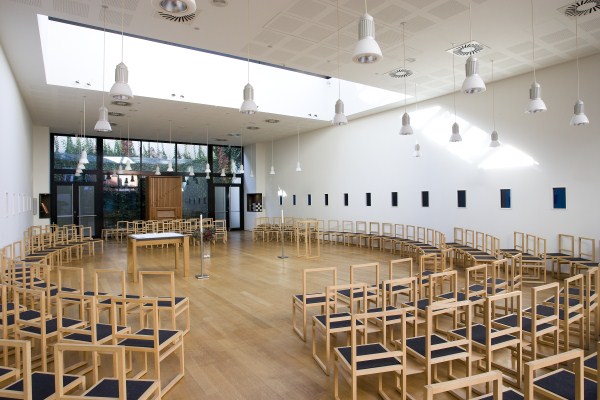
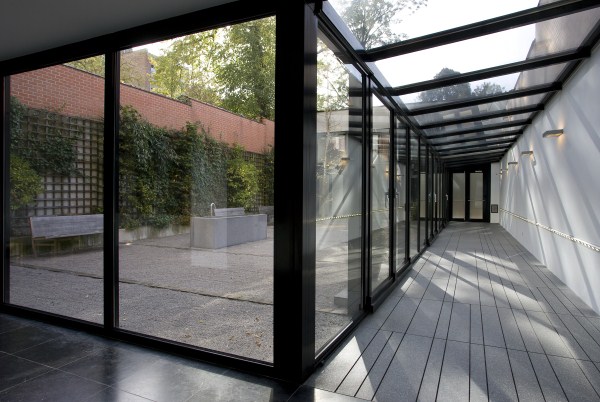






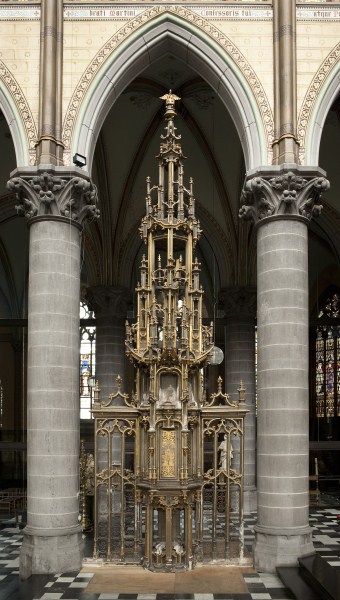
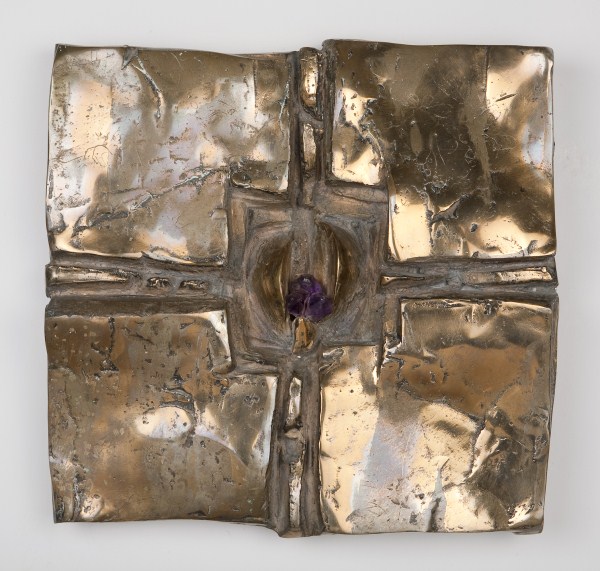
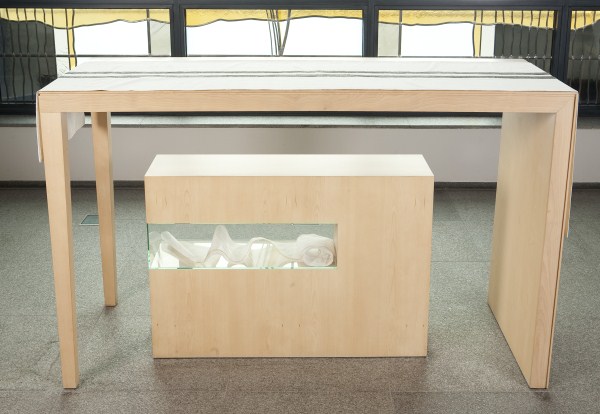
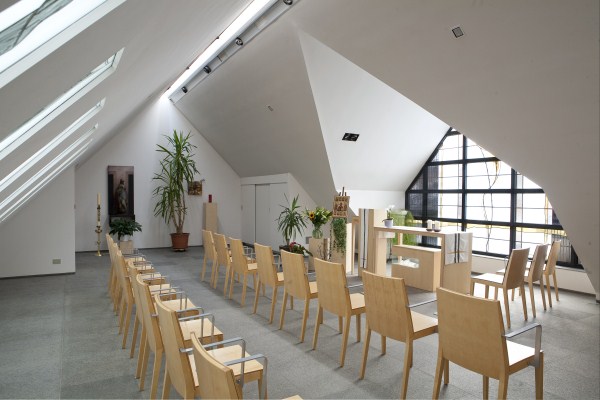
.jpg)
.jpg)
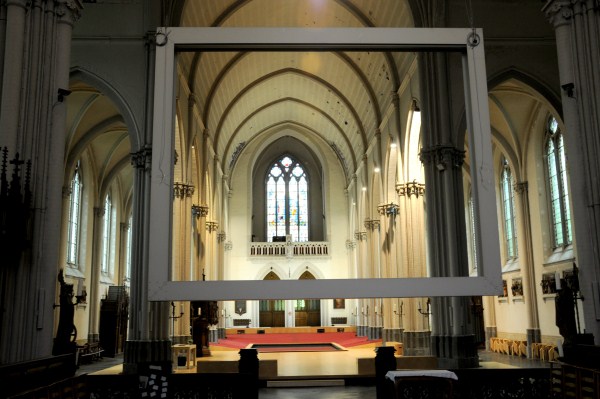
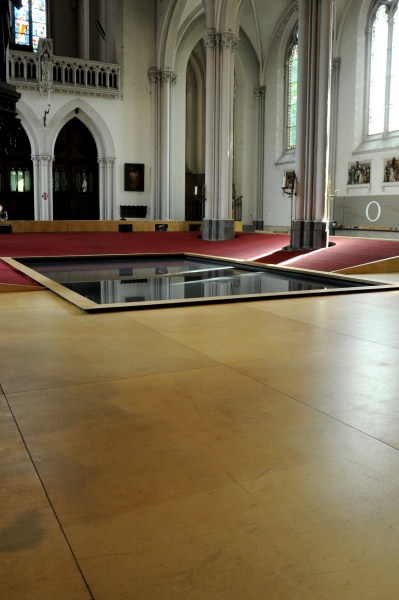
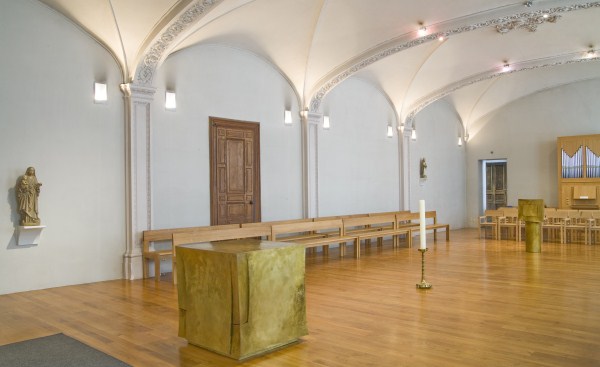
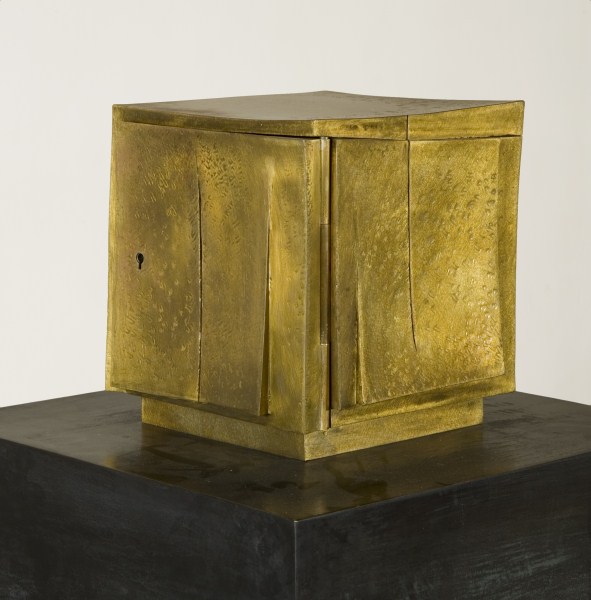
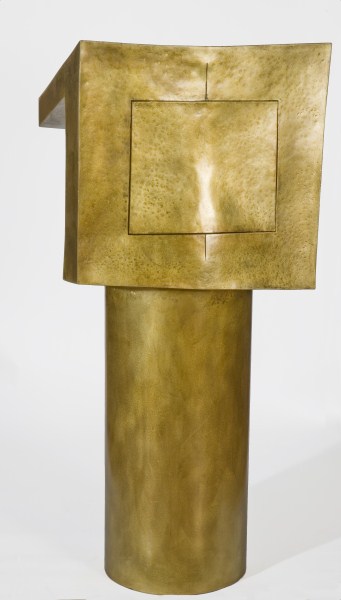
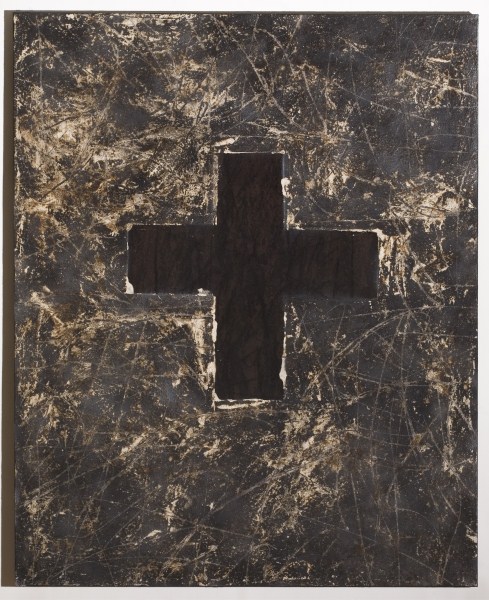
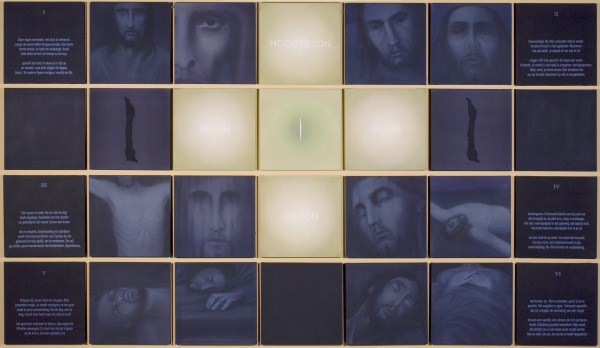
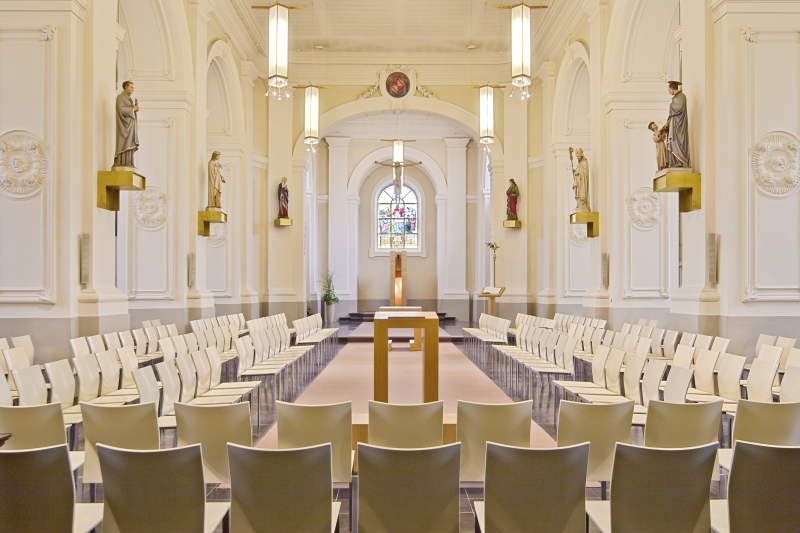
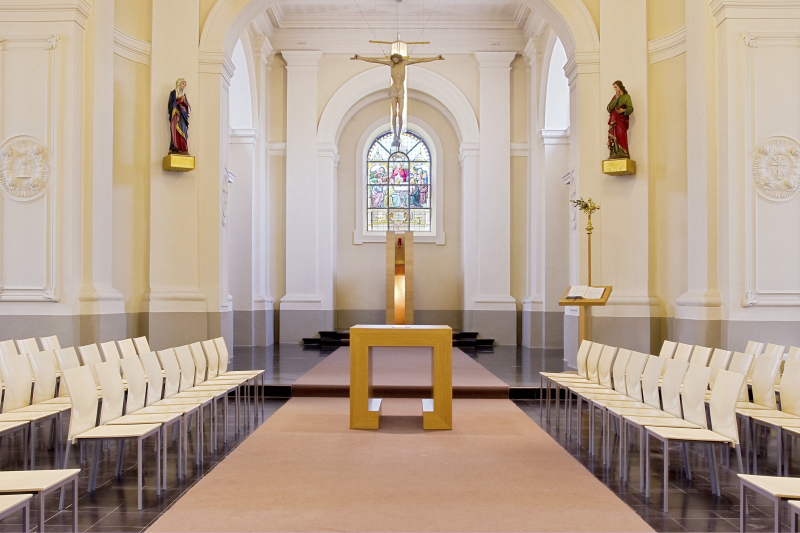
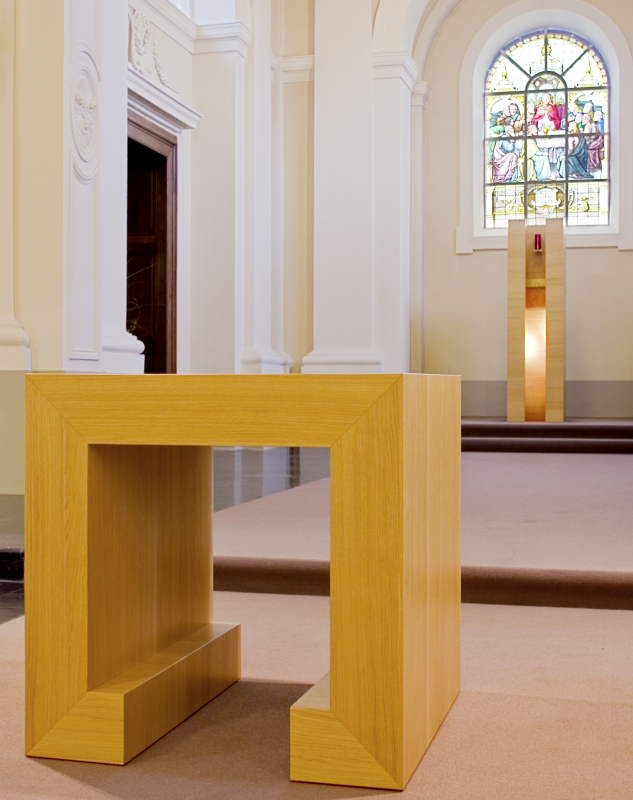
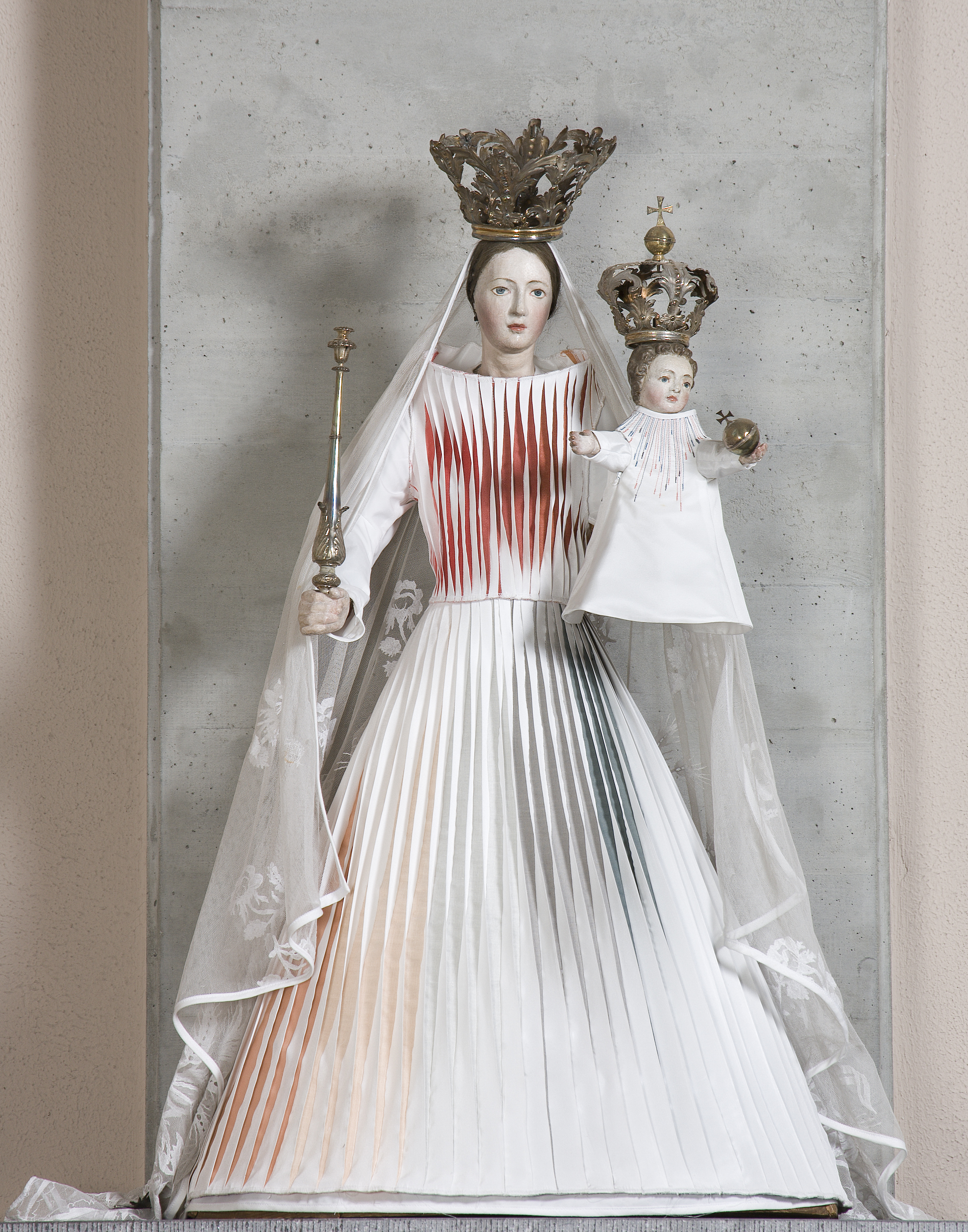
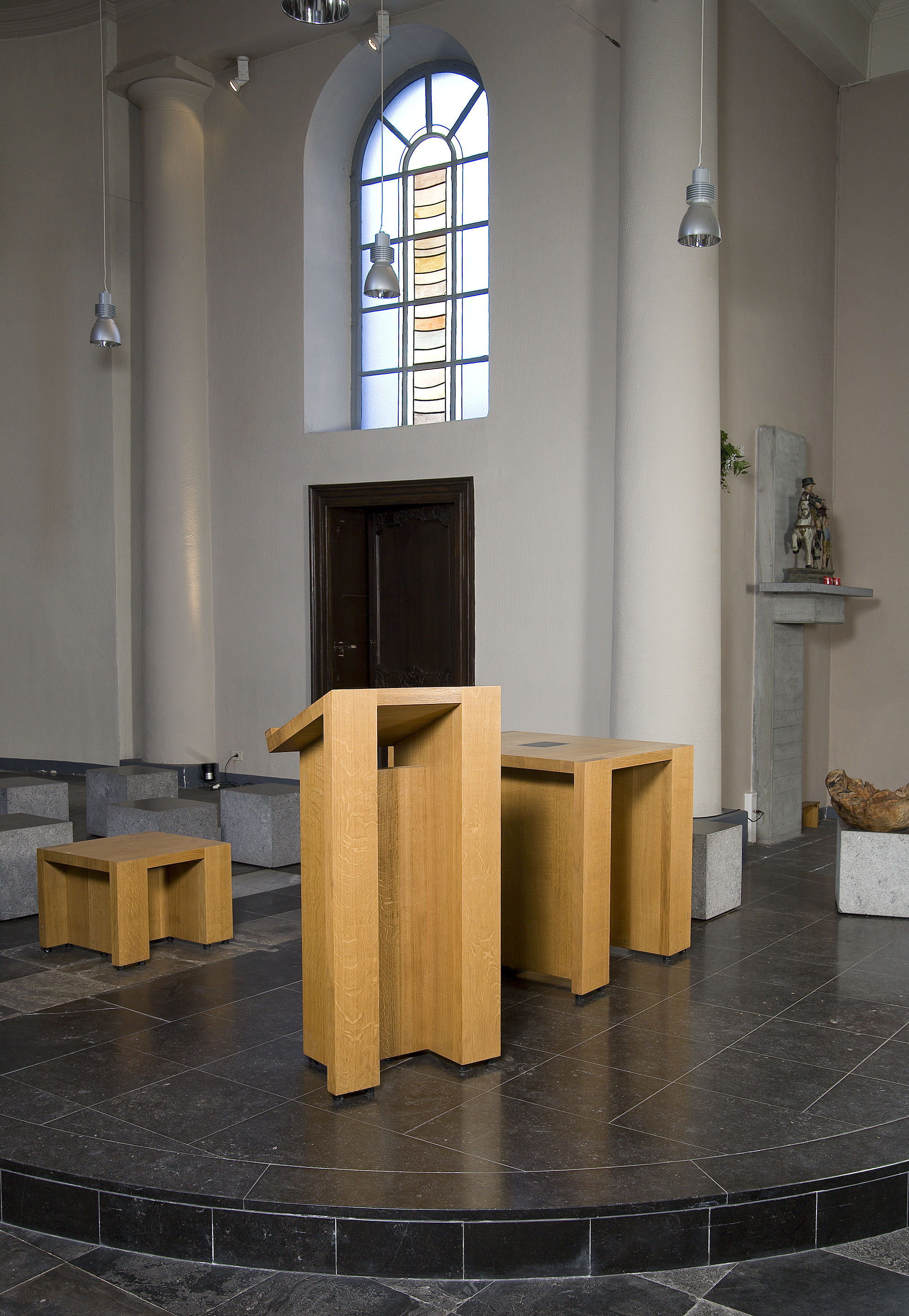
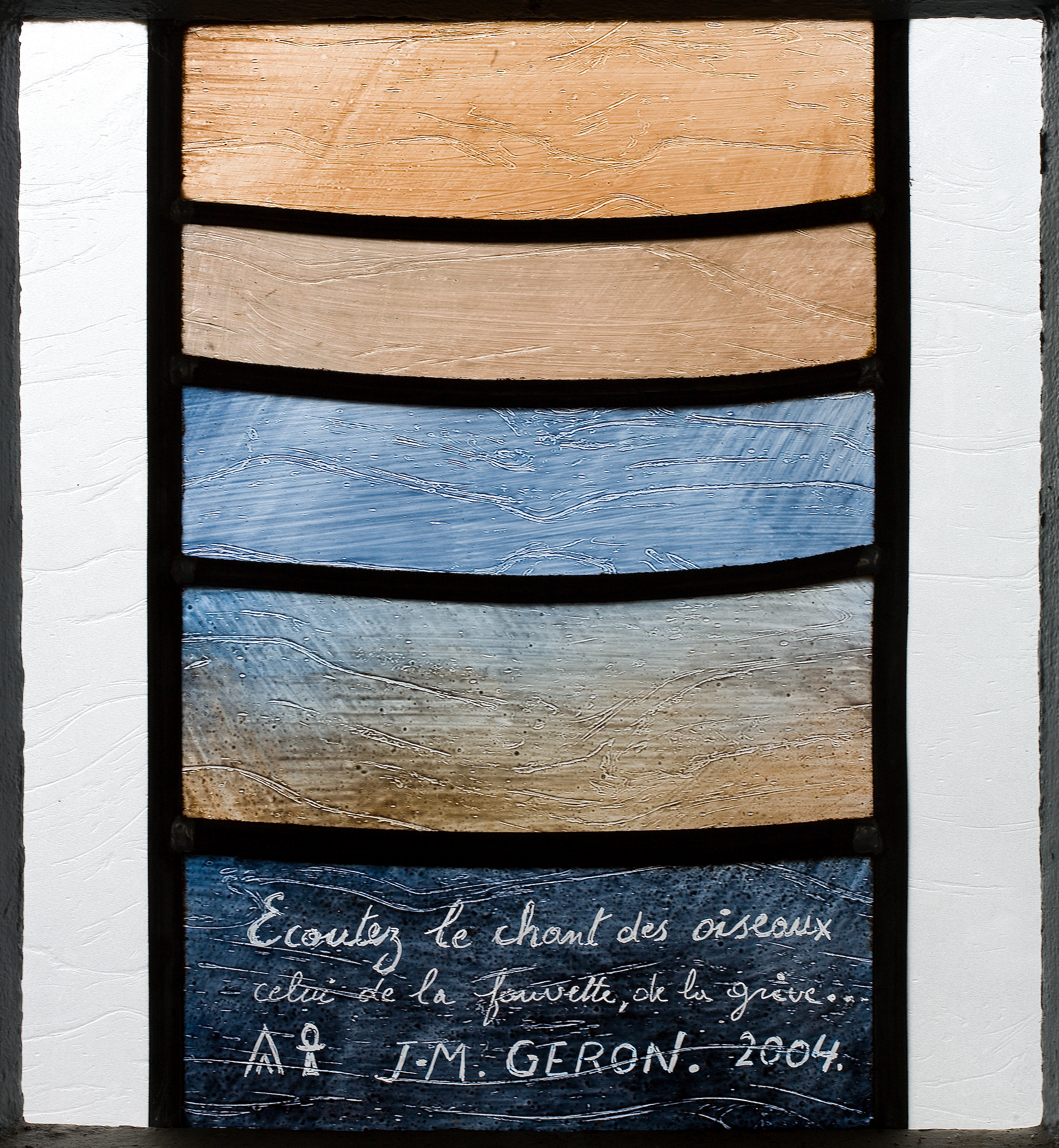
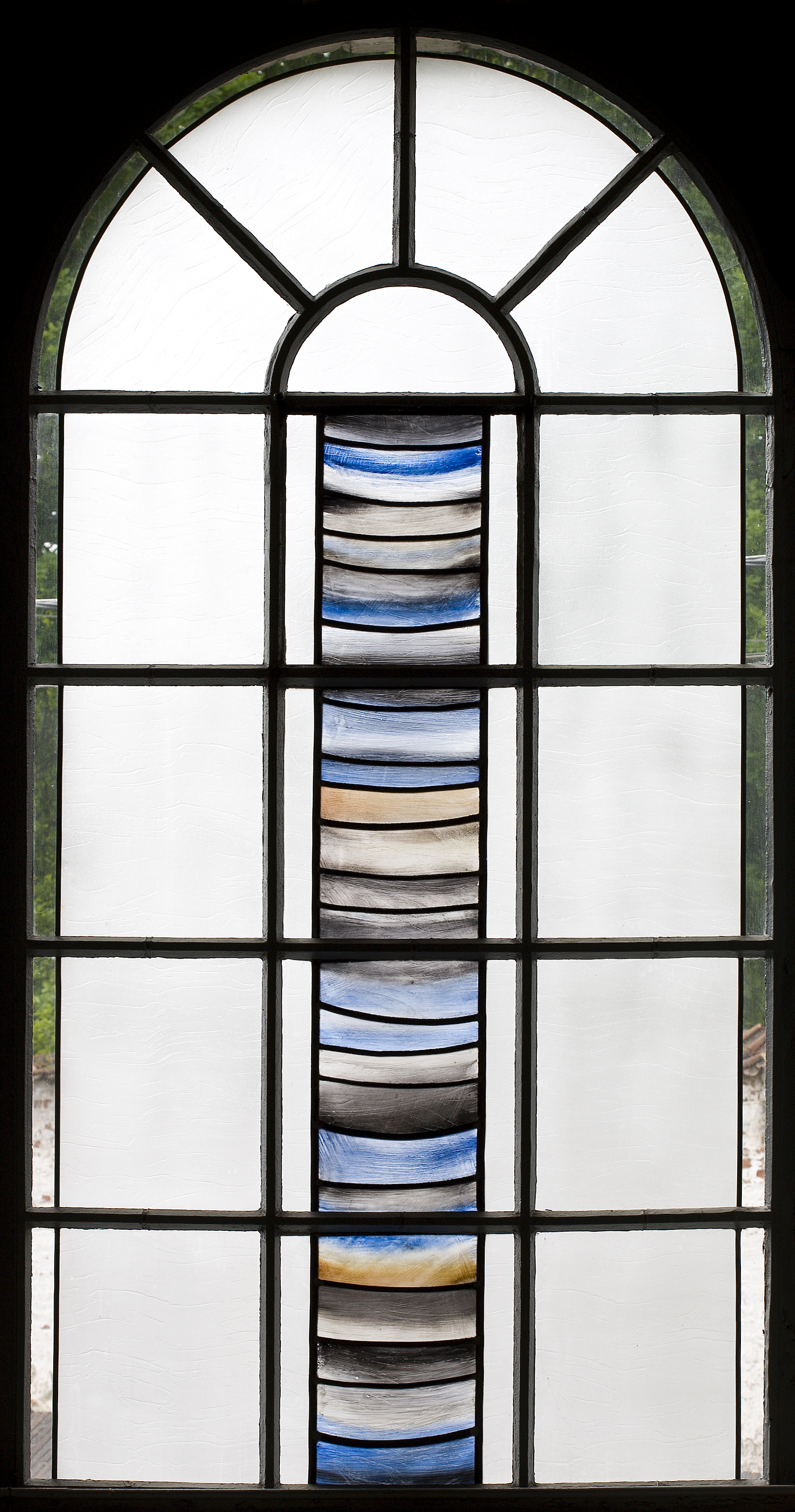
.jpg)
